Ookla Finds UK Trains Deliver Some of the Slowest Wi-Fi Speeds in Europe
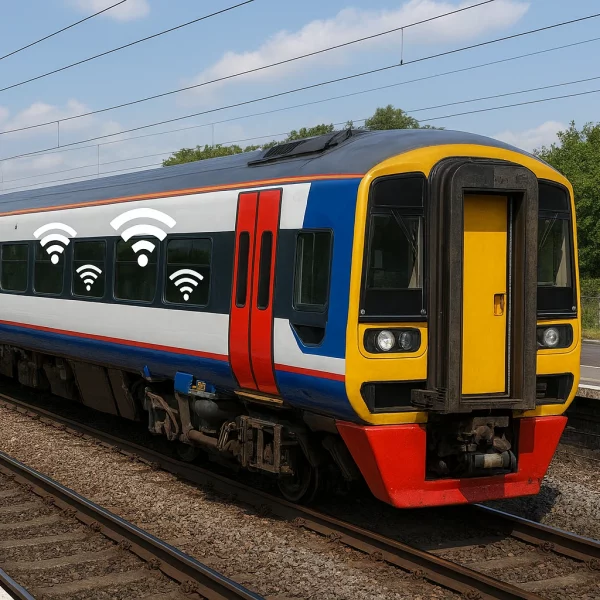
Network testing firm Ookla, which collects broadband performance data from consumers via their popular Speedtest.net service, has examined the onboard WiFi performance of train services across Europe (inc. some Asian rail networks) and found that the United Kingdom delivers some of the slowest internet speeds on trains.
Regular readers will already be aware that the quality of onboard WiFi across the UK’s various rail networks and operators can be a bit of a patchwork. The previous government once pledged, in 2017, to make “uninterrupted” WiFi and Mobile (5G) speeds of up to 1Gbps (Gigabits per second) available on all mainline train routes by 2025. But this never materialised, and only a very few rail operators have achieved such an outcome.
The current government recently circled back to this area as part of their Infrastructure Strategy for the next 10 years, which among other things committed £41m to “introduce low-earth-orbit satellite connectivity on all mainline trains, significantly improving both the availability and internet data connection speeds for Wi-Fi connected passengers“. But it’s unclear when this will be delivered.
Advertisement
In the meantime, Ookla’s latest study found a wide gap in the best and worst European train operators for onboard WiFi performance during Q2 2025. Sweden was named the fastest in Europe for Wi-Fi with a 64.58Mbps median average download speed, followed by Switzerland (29.79 Mbps) and Ireland (26.33 Mbps). But at the bottom end of the table came laggards like Spain (1.45Mbps), the UK (1.09Mbps) and the Netherlands (0.41 Mbps).
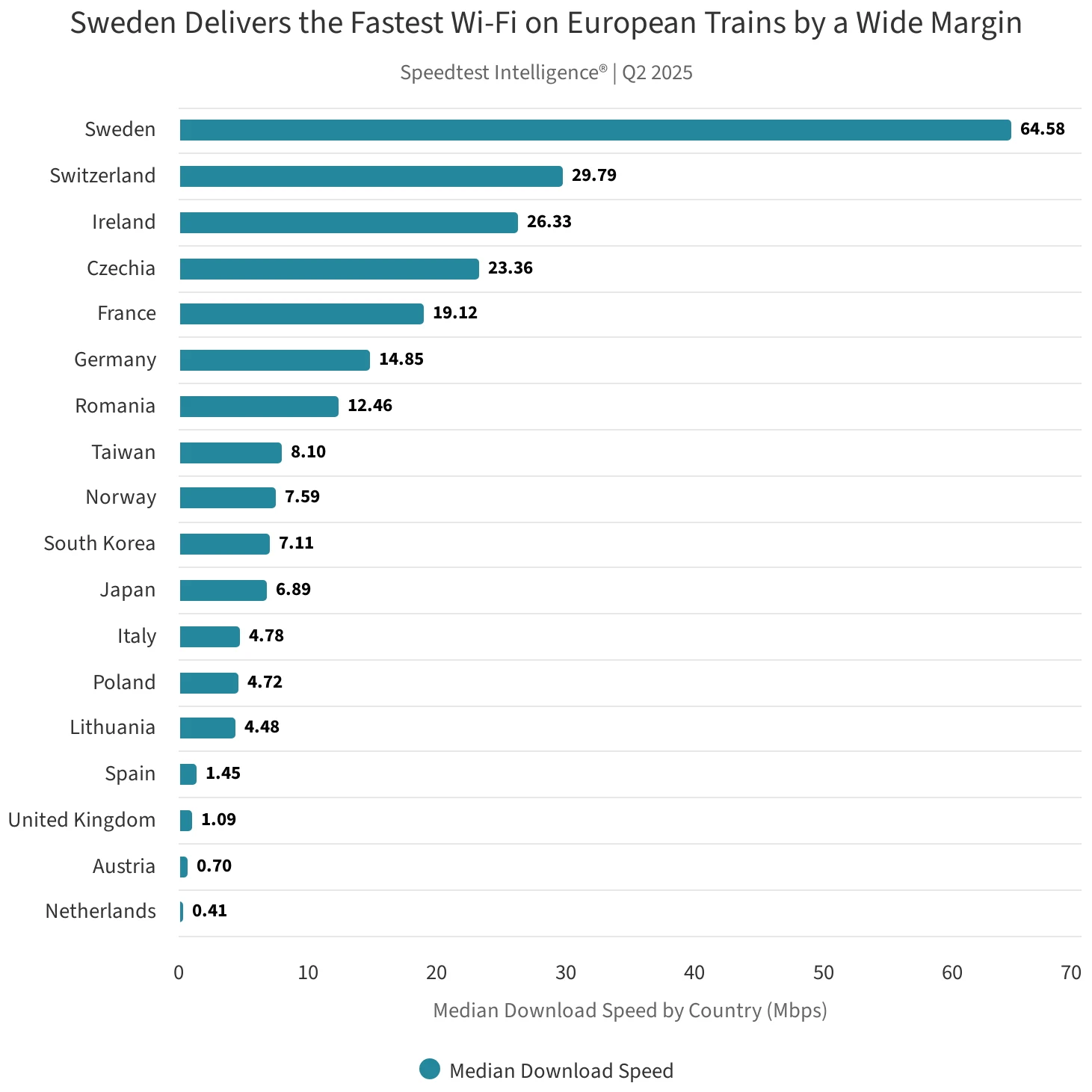
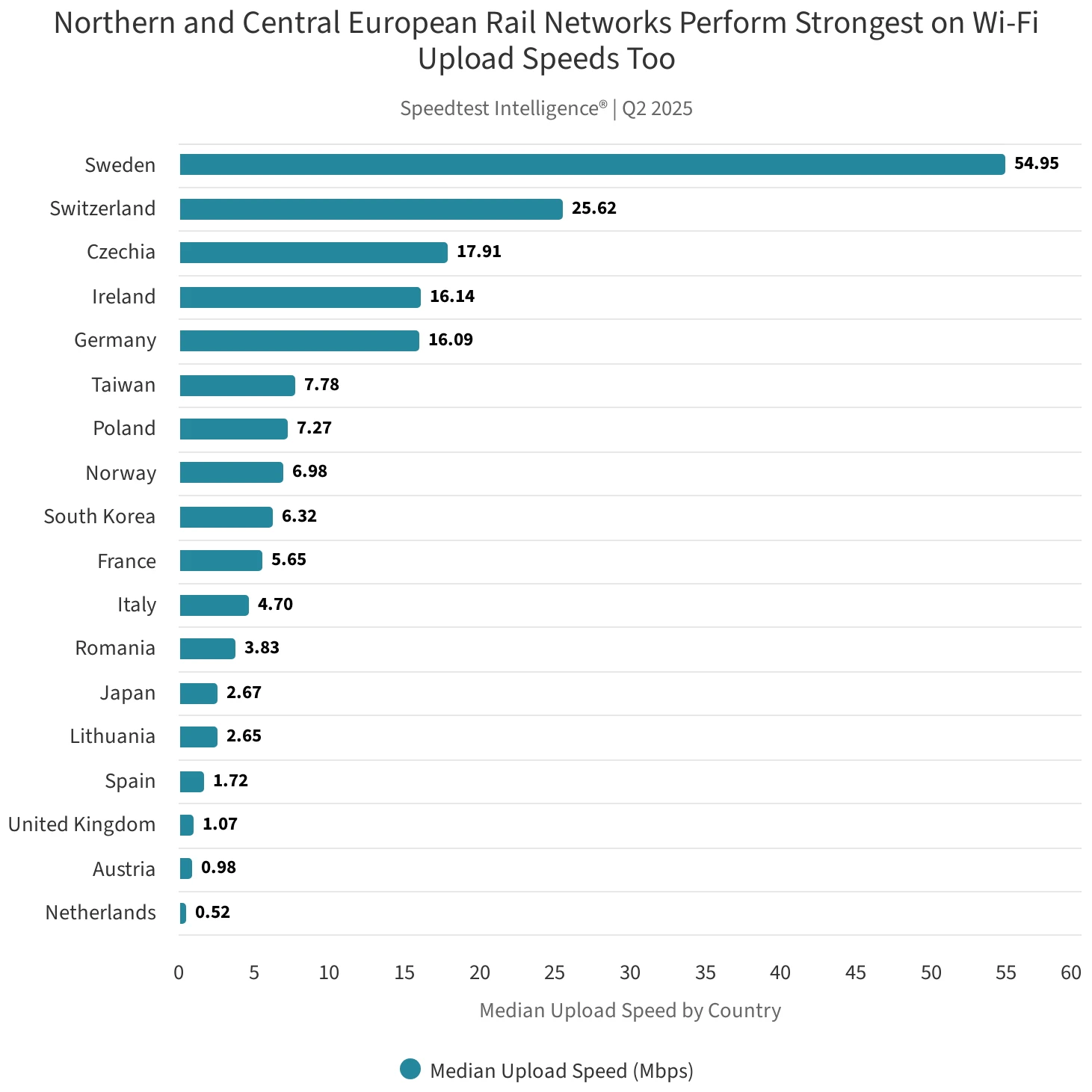
Part of the problem in the UK could be that many rail operators are still using older Wi-Fi 4 based connectivity, while 38% of those are on the most congested and slowest 2.4GHz band. On the other hand, some countries that feature a more modern Wi-Fi mix and thus drive greater use of the 5GHz band, like Spain and Italy, clearly still underperform on speed. This is often because their backhaul capacity can’t keep pace due to poor satellite or trackside infrastructure, which is the key factor for onboard performance.
Advertisement
The picture is a bit more varied when we look at latency performance, where the UK places about upper mid-table with an average response time of 49ms (milliseconds). However, given the super slow onboard broadband speeds, having a modestly faster latency isn’t quite so important. Taiwan delivered the fastest latency times of just 13ms, while the slowest came from Poland at 92ms.
Ookla’s full report goes into a lot more detail, including about the materials used in the construction of train carriages and onboard network design, although it’s clear from the report that political leadership and policy makes a big difference in this area. As does the adoption of satellite broadband connectivity from Low Earth Orbit (LEO), which is of course something that the UK government is now pushing (but this won’t help in tunnels).
Ookla’s Onboard Train WiFi Study
https://www.ookla.com/articles/train-wifi-2025
Mark is a professional technology writer, IT consultant and computer engineer from Dorset (England), he also founded ISPreview in 1999 and enjoys analysing the latest telecoms and broadband developments. Find me on X (Twitter), Mastodon, Facebook, BlueSky, Threads.net and Linkedin.
« ASA Ban UK ISP Community Fibre’s “Misleading” Best Internet Provider Claims
Advertisement
Leave a Reply Cancel reply
Privacy Notice: Please note that news comments are anonymous, which means that we do NOT require you to enter any real personal details to post a message and display names can be almost anything you like (provided they do not contain offensive language or impersonate a real person�s legal name). By clicking to submit a post you agree to storing your entries for comment content, display name, IP and email in our database, for as long as the post remains live.
Only the submitted name and comment will be displayed in public, while the rest will be kept private (we will never share this outside of ISPreview, regardless of whether the data is real or fake). This comment system uses submitted IP, email and website address data to spot abuse and spammers. All data is transferred via an encrypted (https secure) session.







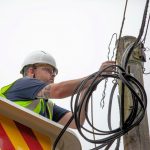
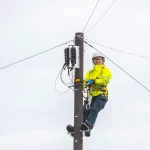

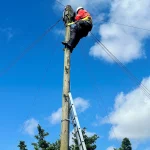












































Many of these countries have had their telecommunication systems upgraded with funding from the EU. By far the biggest contributor to the EU Budget is Germany. It is therefore ironic that Germany will have funded many of the benefits its fellow EU members are receiving. This is by virtue of the financial model Germany followed for several decades to the detriment of its own services, including its railways, which are now amongst the worst performers in Europe.
In other words; you can have great Wifi service, but what about the workers?
Germany chose to try and protect Deutsche Telekom, they kept the Bundespost model going and resisted regulations that would’ve made their market more competitive.
Zero irony in what you’re describing: in those narrow terms that’s the EU working as intended. On wider terms I’m sure Germany didn’t mind what the EU did for their exports both within and especially outside the EEA.
The condition of Germany’s telecoms network is entirely of its own making: directly burying copper in the 90s and even early 2000s to a lesser extent is inexcusable. The barriers to building competitive infrastructure and for DT in upgrading their own persist.
No, EU is not funding mobile operators withing the EU itself like UK govt do.
@Polish Poler
Many Germans are not happy with Germany funding the rest of the EU, and now that Germany has changed its own fiscal policies, there are questions about how this will impact EU Budget funding going forward.
Again, the EU members may be doing well on the popular metrics, but the fundamentals are unsound.
P.S.
Under EU Law, member states can not avoid the adoption of EU legislation indefinitely.
Why add more cost to a very expensive ticket in the first place, use your own WiFi, if you don’t get a signal put the onus on your provider, it’s them who should be delivering, train companies should be focusing on rail performance rather than on board connectivity.
Exactly, I really don’t see the need for offering wifi at all where there should technically be a mobile provider available – which is all the trains are using. Mobile data is so cheap, and tourists will likely have an esim plan if they aren’t using whatever their mobile provider, err, provides.
If they want to be used by more people and fill the seats they have to provide value adds like connectivity.
These are pretty minimal in cost compared with the rest of their expenses and as a proportion of the ticket price.
Indeed.
Further, You have no idea if the public Wifi system has been compromised.
@Polish Poler:
No, they do not.
It is a cost to every taxpayer. These are premium services which, now that the railways are being renationalised, must be paid for by the consumers.
Yes, they do. Some journeys people have alternatives to the train. Getting the extra people onto the train outside of rush hour when you’re running the trains anyway is gravy.
This ignoring that expectations change. Just because something is nationalised doesn’t mean the service should immediately revert to something from Soviet Russia to at best save pennies and at worst lose money. The vast bulk of railway costs in our system are inelastic so all about demand.
@Polish Poler:
Communications are non-core services. We can not afford the railway as it is now. The offering is also non-core. There is therefore no justification for a premium service to be subsidised by taxpayers for a very small minority.
@Polish Poler:
I do not see why you would make a comparison to the Soviet Union unless it is to highlight the similarity between your grasp of economics with that of the infamous regime. The service does not make a profit, it does not even generate revenues, but it does incur significant costs for the taxpayer, especially from the funds being sunk into provisions being made specifically for the public Wifi service.
I was going to say “it works though, right”.
However, 1mbps average on UK trains.
So no, it doesn’t really.
They should aim for a minimum of 10mbps broad coverage, or not bother at all.
This is the United Kingdom where most things are total pants and generally overpriced, so why would a train wi-fi connection be any different
Travelled from St Pancras to Derby a few weeks ago. Only received a semi-usable signal for a few minutes of the 1hr40min journey (and then pretty much only around stations). Kept switching between both Vodafone and O2 but both different degrees of terrible. Around half of the journey had zero signal at all.
Train Wi-Fi didn’t really work either (presumably as it’s external antenna’s couldn’t get a signal either).
Some people say the trains they use on this line have a coating on the windows that causes issues with signal, however it’s clear the infrastructure simply isn’t suitable for any type of connection on this route (on VF and O2).
Vodafone and o2 share infrastructure so in most places they will be using exactly the same tower location.
But the issue o2 have is that they have less spectrum.
@Mark Smith
VM02 now has about a third of the spectrum following the transfers between the providers.
Expecting network operators to provide connectivity in cuttings and tunnels is unrealistic. Potentially needs masts in the cutting, and operator would need to deal with network rail beaurocracy. Trains and guards need signal too, so the operator should deliver a public service too.
The metal and windows on trains also create radio challenges.
Network Rail has ongoing projects in several areas in conjunction with various operators to improve the coverage along principal rail routes.
An upgrade to GSM-R (the rail networks communication system) is needed. Will things improve when the necessary upgrade is completed?
GSM-R purpose is totally different.
The process has already started on the design of the replacement technology with the UIC leading.
Hey, at least we’re not last for a change, right guys? Right???
Last I was on a Merseyrail 777.
I connected to the WiFi at 1.14 DL and 0.8 upload.
Was just about getting WhatsApp messages
And i think that’s absolutely fine.
What is it with people that can’t put their phone down for a while. If on the train, relax and look at the view, more out there than looking at a screen all the time. I realise some people may work when on the train, but come on, not everyone.
Like when I’m cycling on the cycle path, you get people riding bikes using their phone, or people walking with their heads down, looking at what is on their phone and not taking a blind bit of notice of what is going on. You get people walking onto the road because they are more interested in their phones. What is that interesting on their phone that they need to look at them every few minutes?
I am surprised we don’t’t hear of people getting run over every day.
If all the networks went down for one day, people would be lost.
I tend to work on them or catch up with other things. The technology is there and for better or worse I can’t totally forget about work when I’m not there. Life is much faster paced for many of us now and we’re expected to be more productive in both personal and professional life.
Others it’s the age thing again. Who are you or I to judge them?